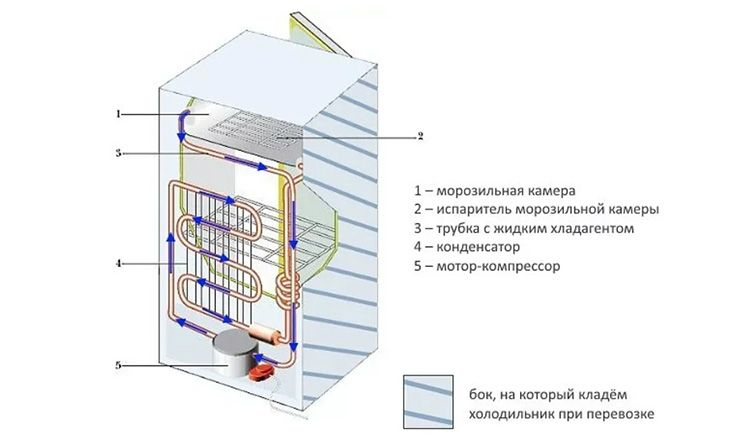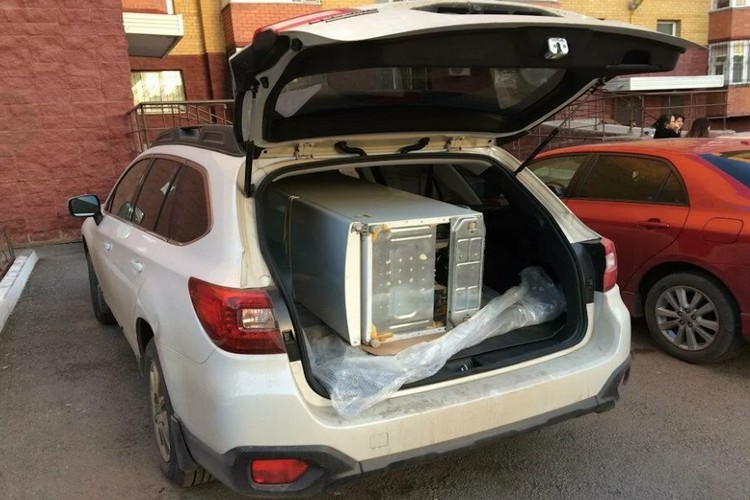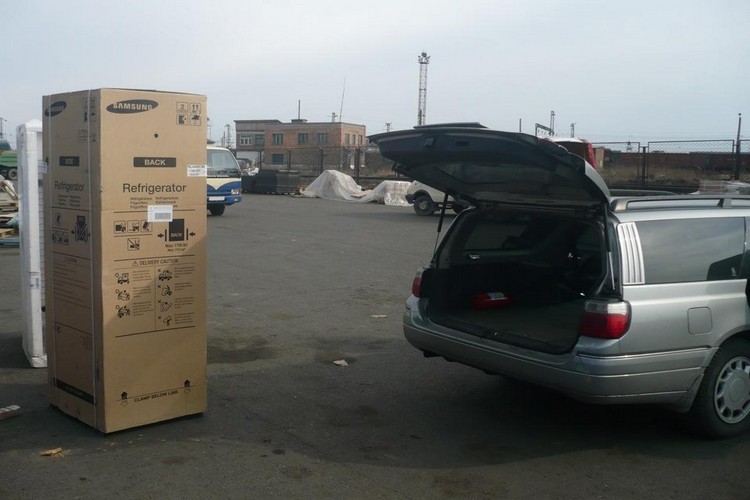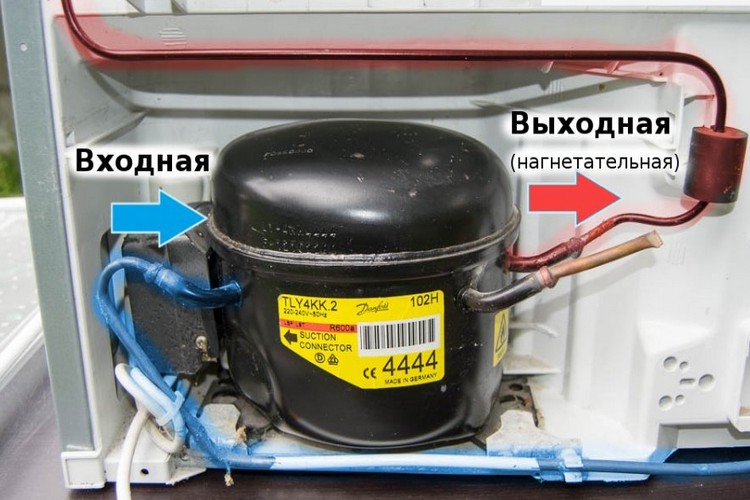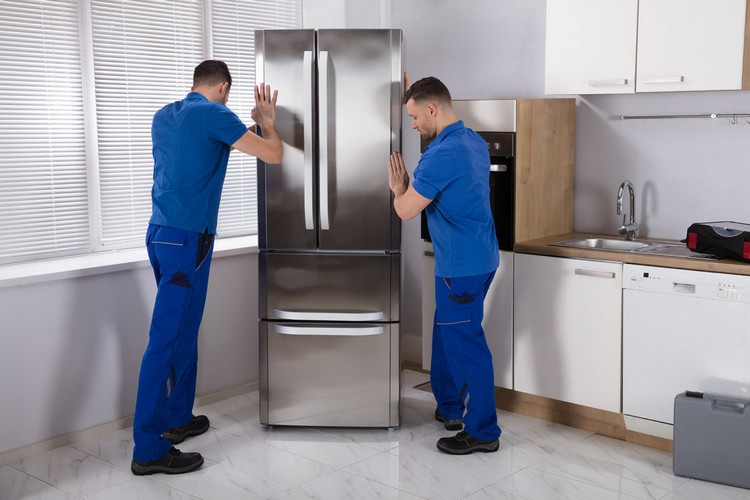Is it possible to transport a refrigerator lying down: features of horizontal transportation
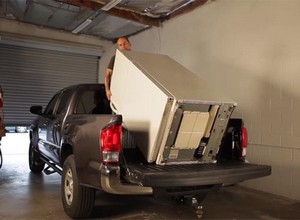 When moving or when buying a new refrigerator, it is transported. And, according to the recommendations of the manufacturer of such equipment, transportation can only be carried out if the equipment is placed vertically.That is, in his "working" position.
When moving or when buying a new refrigerator, it is transported. And, according to the recommendations of the manufacturer of such equipment, transportation can only be carried out if the equipment is placed vertically.That is, in his "working" position.
What is it for? To prevent damage to its components, namely the capillary tubes through which freon circulates, as well as the compressor.
But what to do if there is no specialized car with a high side or cargo body, where you can place the refrigerator "standing"? What do experts advise on this and what you need to know about the transportation of such equipment?
Content [Show]
Is it possible to transport the refrigerator horizontally
The operating instructions for such equipment do not always have a section that explains the rules of transportation. And if there is, then it clearly states that transportation, delivery is possible only with the vertical placement of the refrigerator. That is, exactly as it is initially placed in the packaging from the manufacturer (sometimes a wooden crate is used instead, as well as a film winding).
What explains this? The fact that during transportation on the machine vibration occurs, as well as a dynamic load on all components of the equipment. And the capillary system is designed to work in a vertical position. That is, in this case, the risk of damage to it is minimal.
Also, the compressor itself is placed in such a way that it is not resistant to side load. This can even lead to the fact that it simply comes off, and at the same time damages the coil tubes. Subsequent repairs in many cases are inappropriate. That is, it will be cheaper to purchase a new refrigerator.
Specialists of service centers, in turn, argue that the transportation of large equipment in a horizontal position is possible.
But subject to the following rules:
- The angle of inclination should not exceed 40 degrees. That is, the refrigerator will not be placed strictly horizontally, but at a slope.
- First you need to firmly fix the compressor.
- The entire capillary system must be placed upwards (regardless of which side it is placed on by the manufacturer).
In this case, the risk of any problems is minimal.
In what cases is the refrigerator transported horizontally
This transportation option is mainly used if there is no truck designed to transport large-sized equipment (with high sides). In this case, the refrigerator is installed horizontally. But you need to do everything to minimize the likelihood of its breakdown.
You also need to consider that there are several options for refrigerators that absolutely cannot be transported "lying down".
Which refrigerators cannot be transported horizontally
Such a ban is provided for all old "Soviet" refrigerators, as well as for the most modern ones equipped with the No Frost system. They can only be placed vertically.
And this is because of the weight of their compressors, the electric motor. It is so large that even a slight vibration can come off and damage the capillary system.
And in old refrigeration equipment, large volumes of freon are often used. He is flammable. That is, accidental damage to the capillary sealed system can even provoke a massive fire.
Preparing the refrigerator for transport
Both a new and a used refrigerator must be properly prepared for transport, because they are not designed for horizontal transport.
General recommendations:
- Completely free both the freezer and the refrigerator from products and shelves. Anything that can be removed must be removed. Additionally, you can remove the plastic decorative panel, the handle (the first one is held on by plastic latches, the handle is unscrewed).
- Defrost the refrigerator. That is, disconnect from the power supply, let it stand for at least 12 hours.
- Clean the inner chambers gently with a soft sponge and soapy water.
- If manual defrosting is provided, drain all the water, thoroughly dry all the “insides” of the refrigerator.
- Fix the compressor. For this, most manufacturers provide for the installation of transport bolts (2 - 3 pieces). Also, it is additionally fixed with the help of elastic belts, which additionally contribute to vibration damping.
- If necessary, the door of the refrigerating and freezing chambers is dismantled (for example, if the refrigerator cannot otherwise be taken out of the room, since its dimensions exceed the doorway).
- If the doors are not dismantled, they are fixed with a belt, masking tape or film.
Then you can proceed directly to loading. The main thing is to avoid sudden movements, shocks.
If the handle has not been previously dismantled, then it is impossible to take it as a grip. It is not designed for high dynamic load and will simply come off.
Under no circumstances should the refrigerator be turned upside down during loading. In 99% of cases, this will end with oil getting into the capillary system of tubes, and they will need to be completely cleaned (and this is done only in a service center).
The demonstrated door should be installed at the time of transportation (for additional protection of the enamel or acrylic coating from the inside).
On which side is the refrigerator transported in a horizontal position?
The capillary system must be placed on top when transported in the supine position. For most refrigerators, it is located immediately behind the back wall (or in front of it).
Accordingly, it is necessary to lay the equipment on the “door”. In this case, the probability of damage to the tubes is minimal.
You can also find out which side the tubes are placed on from the instructions.
But keep in mind that in some models they are located on both sides. That is, on one of them, freon approaches the compressor, on the other, it enters the capillary system. And the “outgoing” tube should be located on top.
How to find out? Just touch it gently with your hand. But you need to do this only after turning off the refrigerator, giving it at least 15 - 20 minutes to settle. The tube that will be warm is the one you are looking for. It should be placed strictly at the top.
When can I use the refrigerator after transportation
The instructions state that the refrigerator must not be turned on immediately after transportation. You need to wait. How? At least 2 - 4 hours if the transportation was carried out in the warm season (at an ambient temperature of about 20 degrees or higher). And at least 6 - 8 hours, if - in the cold season (when the temperature is less than 20 degrees).
And experts do not recommend using the equipment after transportation for as long as 24 hours, while it should be placed vertically all this time.
What is it for? Inside the compressor is viscous oil. And it should be located below, where all its rotating parts are located.
And after a long transportation of the refrigerator on its side, it accumulates on the side. This can lead to the fact that after switching on, oil will enter the capillary system. Naturally, this will cause its blockage, and then it will need to be replaced, since the refrigerator simply will not work (freon "cannot" circulate).
How is ambient temperature affected? The viscosity of the oil directly depends on it. The warmer - the lower the viscosity, that is, the oil will drain to the bottom of the compressor faster. The lower the temperature, the more viscous it is, respectively, it will take more time.
Why is it important to transport your refrigerator with care?
Both the capillary system and the compressor in the refrigerator do not have any seals or rubber bands that would absorb vibrations.
And the engine itself is located on the frame, immersed in oil.All this is necessary so that during operation it does not create any additional noise, vibration is minimal. That is, it is actually not fixed in any way. And from the slightest movement, it can move from its frame, damage the tubes (they are quite thin, which is necessary to ensure heat transfer).
Ignoring the rules of transportation will certainly lead to their damage.
And despite the huge number and variety of models of refrigerators, they all work in the same way. And they have the same structure. They differ only in the capacity of the installed compressor, the capacity of the circulation system, as well as the control board.
Other transportation options for the refrigerator
In addition to the horizontal placement of the refrigerator, its transportation can be carried out:
- vertically is the preferred option;
- inclined.
But in any of these cases, you can turn it on to the network only after 2 to 8 hours.
Only after the oil has completely sunk into the bottom of the compressor. For additional protection, you can use a wooden or plastic crate.
Vertical transport
In this case, the compressor, the doors are also necessarily rigidly fixed. All shelves, boxes are removed (it is recommended to carry them separately).
Outside, the refrigerator is either wrapped in foil, or it is simply placed in its original packaging (together with foam).
Inclined
In this case, you must follow the same rules that are used for horizontal transportation.
But the refrigerator itself is placed at an angle. The optimal angle is 40 degrees or more. The equipment is rigidly fixed with the help of transport belts.
In total, the transportation of the refrigerator is not a trivial task, it must be approached with extreme caution. And if there is an opportunity to refuse horizontal transportation, it is better to use it. Use only as a last resort, and only for short distances (up to 100 kilometers).
Old refrigerators, or those equipped with the NoFrost system, must be transported only in an upright position (unless otherwise provided by the manufacturer).
Useful video
We present to your attention a video in which they will tell you whether it is possible to transport a refrigerator lying down:



